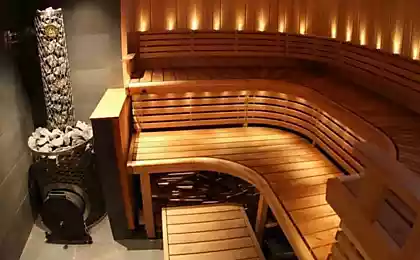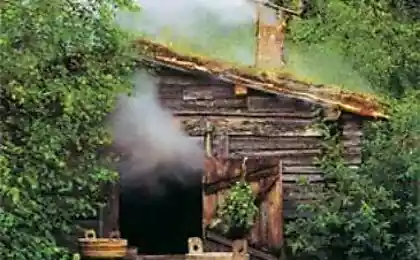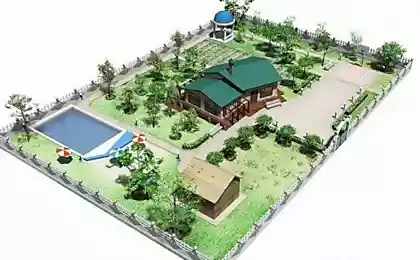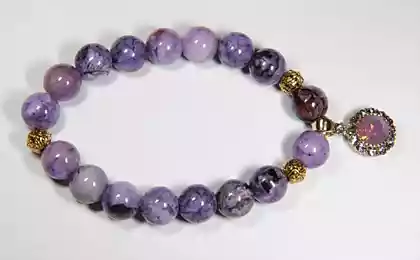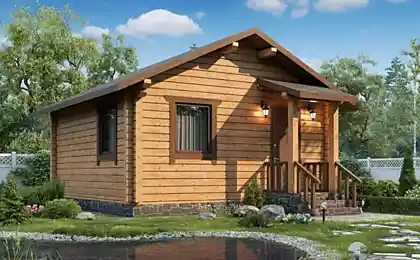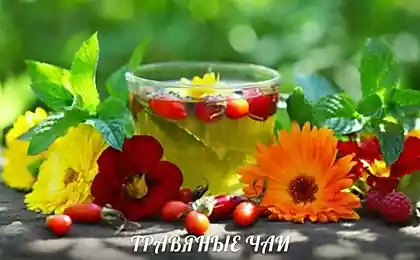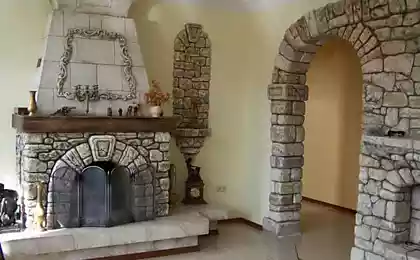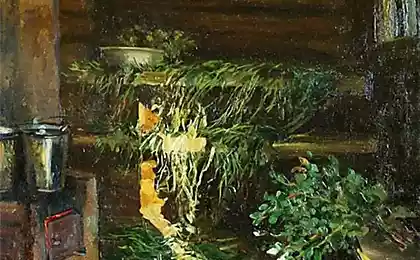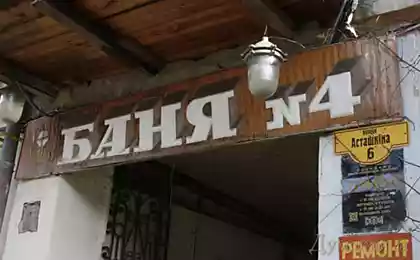958
How to choose the right stones for baths
Stones for bath
What to use stones for a sauna — the question always arises in the construction of baths. Most of the stones that can be found on the banks of rivers and in fields that are not suitable for use in the heater.
The stones for sauna should be special. They must endure high temperature, not rascalities. Chipped stone leaves behind dust that can get into the lungs and harm health.
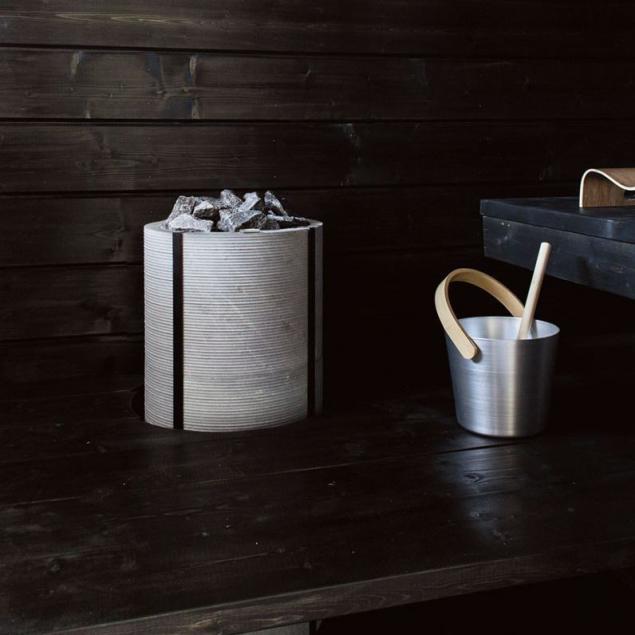
Good stones for sauna long hold heat and release nutrients, strengthening immunity and improving health. From them comes a vapor that relaxes and soothes.
Some types of stones helps to eliminate deposits from the body, and therefore decrease excess weight.In General, if you choose the right stones for baths, that will only benefit and no harm.
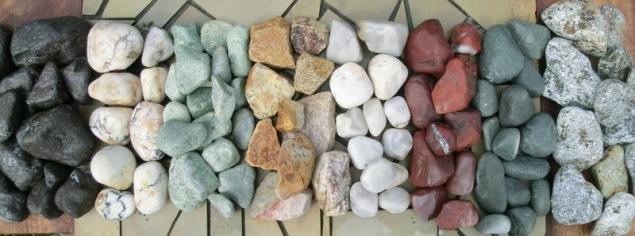
First, stones for baths should be durable. To test their strength is not difficult. Pick up a hammer, put somewhere a stone and hit it properly. A good stone will be nothing but bad can crack or crack.
Another way of checking — it is necessary to heat the stone and throw it into the water. If not split, then the stone is good.
Second, the stones are lined (smooth, polished) and chipped. The big difference between them, but Wicke-Kamenka is preferable to use smooth so they are evenly heated. But the stab area to vaporize more.
Every popular breed of stones for sauna has its own useful properties. Consider the ones that are best suited for use in the steam room.
Gabbro-diabase
This volcanic rock similar to marble or granite of a uniformly dark color. Has high density, strength and low water absorption. With glowing of the gabbro-diabase is expanding uniformly. In addition, those stones in the bath is extracted in ecologically pure area of Russia — Karelia, and are inexpensive.
Black diabase – the traditional core of the heater in the bath. It is inexpensive, environmentally friendly stone black. He has no special healing properties, but possesses optimum characteristics for use in the bath. Therefore, it is recommended to lay down the diabase of the heater, and useful stones to put on top.
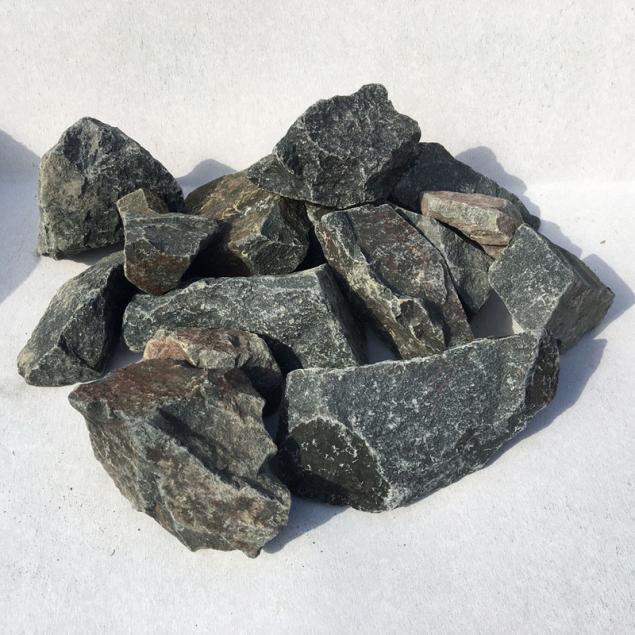
Gabbro-diabase perfectly accumulates heat and releases it long, creating in the bath an ideal microclimate. Stone is durable, resistant to high temperatures.
Of the shortcomings can be identified that the diabase long warm. In addition, if these stones are very hot, they start to exude a strong but special smell.
Besides, on these stones, you cannot apply essential oils and tinctures – they immediately formed a Deposit.
Your
This rock is more dense and durable structure than the diabase. Externally, the stones rocks soapstone for bath discreet but interesting and have a variety of shades of gray.
The breed has a good heat capacity and resistance to chemically aggressive environments.
The major advantage of stone is that it very quickly heats up. Heat he accumulates 2.5 times more than brick kiln and releases it evenly and long. This means that your generates "easy" pairs.
Of the useful properties of this breed of rock we can note that it at nagrevaiushchem soft and comfortable heat of the infrared spectrum, akin to the sun.
Your strengthens the immune system, normalizes blood circulation, removes phlegm from the lungs, treating colds, and promotes weight loss.
So, after visiting the baths with soapstone person can lose up to three pounds. Stone useful in the treatment of rheumatism, osteoarthritis and joint diseases.
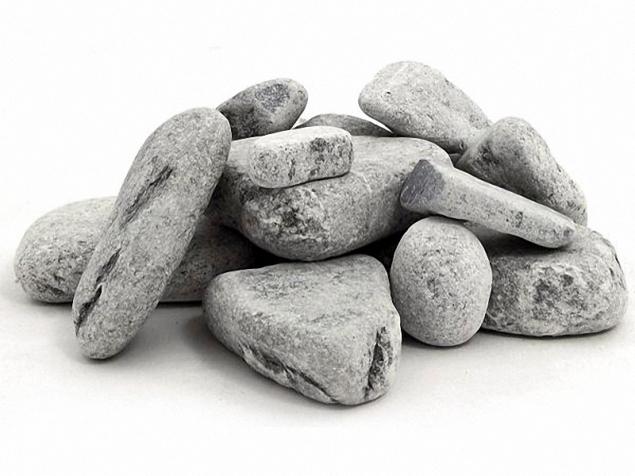
Choosing which stones are suitable for the bath, you must consider that your can "dust". You can get rid of this disadvantage, if before the first bath procedure is washed and calcined stones.
Quite often seen in the sale of low-quality soapstone, is fast crumbling into dust. Besides, the stone quickly becomes brittle and porous, losing water by prolonged heating.
Jadeite
This breed of semi-precious stones is emerald or light green color and is not volcanic, but is a separate mineral. In addition to the beautiful appearance it has high strength and heat resistance, therefore, almost never cracks and does not crumble.
He also has excellent heat capacity, i.e., long gives the resulting heat and generates a very powerful steam. In addition, jade has low water absorption, and is therefore best suited for baths and saunas. It can be used over the years, as it is very strong and durable and does not require careful maintenance.
Jadeite is absolutely safe and environmentally friendly.
Jade has many healing properties. It normalizes the cardiovascular and Central nervous systems, stabilizes blood pressure, treats diseases of the genitourinary system and improves male potency, reduces joint pain, helps to dissolve salt deposits in the body.
In other words, jadeite has a beneficial effect on the organism as a whole.
The color of jade ranging from light green to emerald.
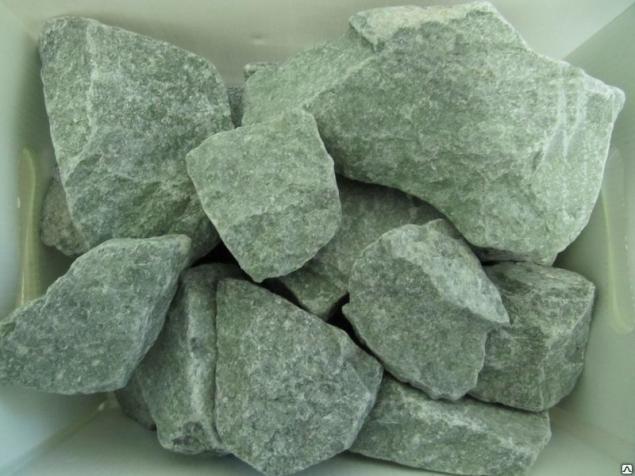
The jadeite is not necessary to completely fill the stove, enough to put it on top of other stones. Jadeite is a rather expensive stone, so to fill the stove only to them irrational.
The jadeite sold in diked and batters.
Beautiful green jadeite is perhaps the best bath stone.
Crimson quartzite
This rock formation is 98% quartz. Valuable and rather rare mineral, has a noble purple colour. It has high density and low water absorption, besides the highest hardness, strength and wear resistance, resistant to chemical attack.
Its other name – the Royal stone. He not only has many beneficial properties, but also an attractive appearance. It is a stone of the color red is often used for lining palaces. Stone crimson quartzite is extremely resistant to cracking when heated and then cooled.
In addition, he gives a special light steam, which is very useful for health. Quartzite helps to normalize blood pressure, treatment of colds and diseases of the joints, removal of salts from the body.Bath with raspberry quartzite for a long time gives you positive energy and vigor.
With regular use in stoves, the stone retains its structure and form, and does not exude toxic impurities when heated.
Royal stone is one of the most durable when used in the heater.
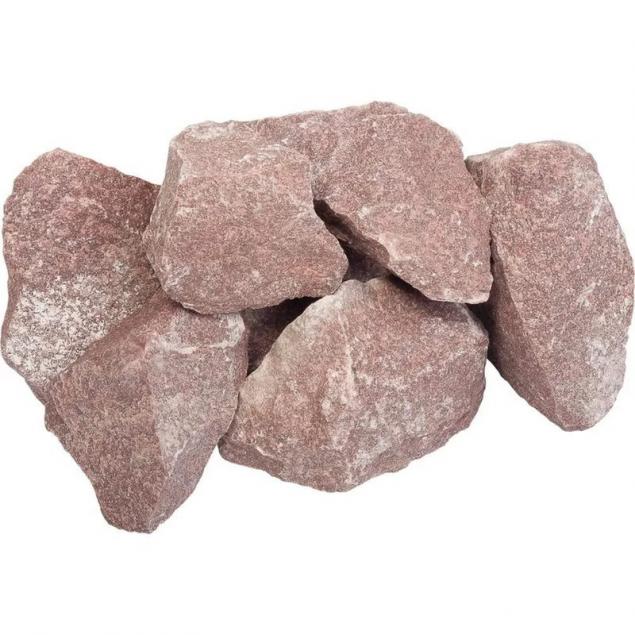
Crimson quartzite is mined in the only field on the shores of lake Onega in Karelia. There have been cases that under the guise of crimson quartzite sold breed pink-red or reddish-gray quartzite, which give crimson quartzite, and in the presence of impurities.
White quartz
The healing properties of quartz have long been known. It cures diseases of the chest and respiratory tract. In addition, the quartz stabilizes blood pressure and may improve circulation.
White quartz, also called "hot ice," is very useful — it fills the room with ozone. When bulbs and the subsequent sharp cooling while sprinkling with water, it starts to produce atomic oxygen. The gas enriches the blood hovering people with oxygen, and activates the brain and improves health.
In addition, the result of mechanical deformations, which are caused by sharp temperature variations, the crystals are "hot ice" begin to emit electromagnetic waves. This phenomenon is called "piezoelectric effect". These waves interact with the human electromagnetic fields, adjust and restore the body's energy system.
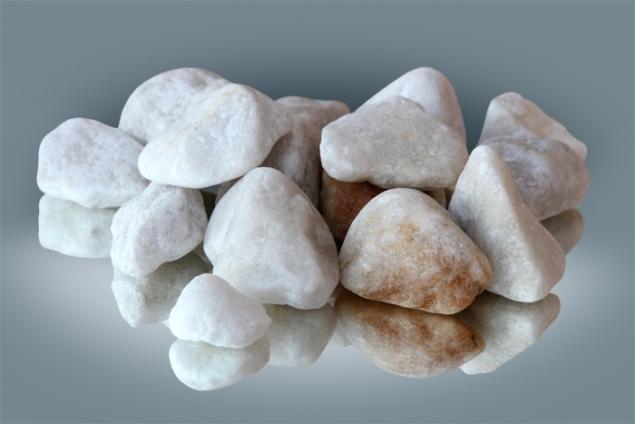
"Hot ice" appreciate the impression in appearance and medicinal qualities.
However, the white quartz is not very durable. He cracks under intense heat and fluctuations in temperature.
Especially desirable to expose the "hot ice" effect of very high temperatures, characteristic for the sauna – he just burst.
Vulcanite
Characteristics of the volcanics and a subjective assessment of its use are exactly the same as that of the gabbro-diabase.
Basalt
Basalt is the most durable of all stones for baths. Is not destroyed and does not crack. Does not smell, does not absorb water at all. The heat capacity of basalt is huge. When heated above three hundred degrees Celsius emit useful radiation in keeping with the human body. Well suited for often heated baths.
Peridotite
Choosing stones for baths, do not pass by peridotite, which attracts a variety of color palettes. It can be different shades from light green to deep black.
Peridotite has a high specific heat, does not contain harmful ingredients, distributes heat evenly when heated. Reacts with carbon dioxide, peridotite cleans and disinfects the air.
Better to lay it on the bottom of the furnace, covering the top other breeds.
Karelian porphyry
Karelian porphyry is solidified lava. It is mined on the shores of lake Onega in the South of Karelia.
Capacity this breed of stones very long time to support the regime of high temperatures in the steam room and to save fuel. This porphyry is not inferior to the expensive jadeite.
This rock, in fact, is solidified volcanic lava and contains resistant to physical and chemical effects of the elements. Basically, it is the oxides of calcium, silicon, and magnesium. In stone are absolutely no harmful radionuclides and no less harmful sulfur compounds.
Consequently, the porphyry is the best option for use in stoves of saunas and baths. It perfectly withstands the constant drastic temperature changes, not afraid to interact with open fire, soak in water in the hot condition does not crack or collapse.
The beneficial properties of porphyry:
Pairs, which generate these stones for baths, has healing properties. It can relieve headaches, stabilizes and aligns our blood pressure, improves blood flow and positively affects the skin.
River stones
Such stones it is better to collect on the banks of mountain rivers.
Hereinafter, the stones have good heat. When heated, they do not have to allocate odors, the surface should appear in films or any substance.
Once the stones are heated (the heat should be well, almost to the red), they should be dropped into the water. All the remaining instances can take place in your oven, if will be the last test — the stones are immersed in water, should not "blow bubbles".
The stones should be the size of 10-20cm. Smaller take makes no sense, they will not be able to accumulate a sufficient amount of heat and large very quickly burst due to uneven heating.
The same verification procedure can be set and purchased the stones.
Cast-iron stones
Cast iron rocks — it's the balls, manufactured industrially, are able to heat the steam room three times bystree stone, and long to keep warm. Their disadvantage is that they quickly rust. In addition, their application does not produce a therapeutic effect, which can be obtained using natural stone.
The stones of salt
One of the innovations is the use of Himalayan salt in the steam room. Salt therapy helps support healthy breathing, healthy sleep, improves the condition of blood vessels.
The therapeutic effect of Himalayan salt manifested in its heat, when the extraction of minerals is most active.
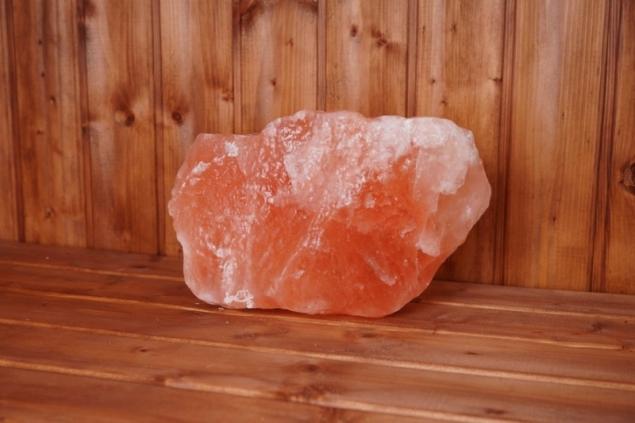
Air saturated with compounds of potassium and magnesium, iodine and chlorine, calcium and iron, barium, chromium and manganese actively influences the respiratory tract, strengthens the immune system. Most of the salt contained in the air at a temperature of 60 °C and humidity of 20-40%. But when humidity is more than 74% of the salt goes into solution.
Therefore, in the baths (with a moisture content of 50-70%) is recommended to install a special ventilation system to ventilate and dry the room. Saunas material from Himalayan salt can be used without restrictions, here their service life comparable with the life of the lining.
Rocks sedimentary rocks (Sandstone, limestone) for the bath don't fit categorically. Their lack of porous structure, with a sudden cooling they cracked and sharp pieces can fly a few meters.
It is worth noting that all the experts agree that the best species for steam stones are volcanic. The logic is simple – once they have undergone during the formation of the action a giant temperature magma of the Earth, then treatments will stand quietly. How to place the stones in the oven, how many gems you need for the bath — especially individual case.On average, calculate the number of stones can be based on the amount of steam for every meter of volume should be about 20-30 kg of stones.
The packages with stones always write the recommended method of installation, but the basic rules for most sauna stoves-sauna stoves were and still are the following:
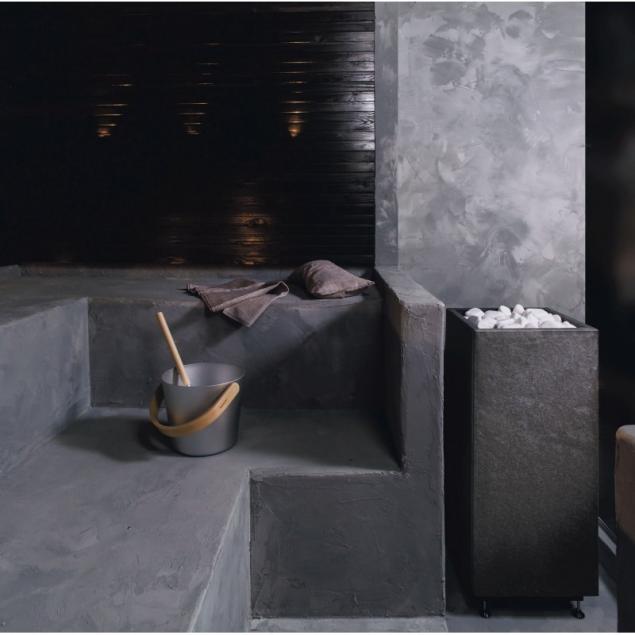
Under each stove requires its own paving stones. Do not be lazy to experiment with laying stones in the stove. General advice here still no one can not give – all design of furnaces are different, everyone drowns them in different ways – to whom and under 80 degrees is hot, and someone with a 120 just begins to steam.
After experimenting and selecting the best scheme of laying stones in the stove, it's good to sort through them, removing and replacing cracked.
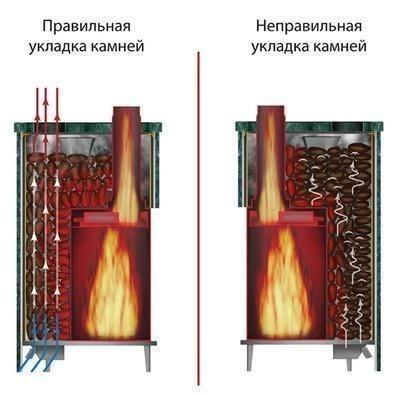
In life, of course, from my own experience, Kamenka are sorted out only when it is bad to burn the oven because clogged all the passages crumbs from stones (the heater with the passage of the smoke). In an open heater is easier — all the stones in sight.
Alternatively, filling of the heater there may be artificial ceramic stones, such as porcelain, which perfectly withstand extreme conditions and have good resistance. Of course, to completely replace the gifts of nature, they are not able to, but for the top layer of filling will fit perfectly. published
P. S. And remember, only by changing their consumption — together we change the world! ©
Source: vk.com/dacha.life?w=wall-83256656_33899
What to use stones for a sauna — the question always arises in the construction of baths. Most of the stones that can be found on the banks of rivers and in fields that are not suitable for use in the heater.
The stones for sauna should be special. They must endure high temperature, not rascalities. Chipped stone leaves behind dust that can get into the lungs and harm health.

Good stones for sauna long hold heat and release nutrients, strengthening immunity and improving health. From them comes a vapor that relaxes and soothes.
Some types of stones helps to eliminate deposits from the body, and therefore decrease excess weight.In General, if you choose the right stones for baths, that will only benefit and no harm.

First, stones for baths should be durable. To test their strength is not difficult. Pick up a hammer, put somewhere a stone and hit it properly. A good stone will be nothing but bad can crack or crack.
Another way of checking — it is necessary to heat the stone and throw it into the water. If not split, then the stone is good.
Second, the stones are lined (smooth, polished) and chipped. The big difference between them, but Wicke-Kamenka is preferable to use smooth so they are evenly heated. But the stab area to vaporize more.
Every popular breed of stones for sauna has its own useful properties. Consider the ones that are best suited for use in the steam room.
Gabbro-diabase
This volcanic rock similar to marble or granite of a uniformly dark color. Has high density, strength and low water absorption. With glowing of the gabbro-diabase is expanding uniformly. In addition, those stones in the bath is extracted in ecologically pure area of Russia — Karelia, and are inexpensive.
Black diabase – the traditional core of the heater in the bath. It is inexpensive, environmentally friendly stone black. He has no special healing properties, but possesses optimum characteristics for use in the bath. Therefore, it is recommended to lay down the diabase of the heater, and useful stones to put on top.

Gabbro-diabase perfectly accumulates heat and releases it long, creating in the bath an ideal microclimate. Stone is durable, resistant to high temperatures.
Of the shortcomings can be identified that the diabase long warm. In addition, if these stones are very hot, they start to exude a strong but special smell.
Besides, on these stones, you cannot apply essential oils and tinctures – they immediately formed a Deposit.
Your
This rock is more dense and durable structure than the diabase. Externally, the stones rocks soapstone for bath discreet but interesting and have a variety of shades of gray.
The breed has a good heat capacity and resistance to chemically aggressive environments.
The major advantage of stone is that it very quickly heats up. Heat he accumulates 2.5 times more than brick kiln and releases it evenly and long. This means that your generates "easy" pairs.
Of the useful properties of this breed of rock we can note that it at nagrevaiushchem soft and comfortable heat of the infrared spectrum, akin to the sun.
Your strengthens the immune system, normalizes blood circulation, removes phlegm from the lungs, treating colds, and promotes weight loss.
So, after visiting the baths with soapstone person can lose up to three pounds. Stone useful in the treatment of rheumatism, osteoarthritis and joint diseases.

Choosing which stones are suitable for the bath, you must consider that your can "dust". You can get rid of this disadvantage, if before the first bath procedure is washed and calcined stones.
Quite often seen in the sale of low-quality soapstone, is fast crumbling into dust. Besides, the stone quickly becomes brittle and porous, losing water by prolonged heating.
Jadeite
This breed of semi-precious stones is emerald or light green color and is not volcanic, but is a separate mineral. In addition to the beautiful appearance it has high strength and heat resistance, therefore, almost never cracks and does not crumble.
He also has excellent heat capacity, i.e., long gives the resulting heat and generates a very powerful steam. In addition, jade has low water absorption, and is therefore best suited for baths and saunas. It can be used over the years, as it is very strong and durable and does not require careful maintenance.
Jadeite is absolutely safe and environmentally friendly.
Jade has many healing properties. It normalizes the cardiovascular and Central nervous systems, stabilizes blood pressure, treats diseases of the genitourinary system and improves male potency, reduces joint pain, helps to dissolve salt deposits in the body.
In other words, jadeite has a beneficial effect on the organism as a whole.
The color of jade ranging from light green to emerald.

The jadeite is not necessary to completely fill the stove, enough to put it on top of other stones. Jadeite is a rather expensive stone, so to fill the stove only to them irrational.
The jadeite sold in diked and batters.
Beautiful green jadeite is perhaps the best bath stone.
Crimson quartzite
This rock formation is 98% quartz. Valuable and rather rare mineral, has a noble purple colour. It has high density and low water absorption, besides the highest hardness, strength and wear resistance, resistant to chemical attack.
Its other name – the Royal stone. He not only has many beneficial properties, but also an attractive appearance. It is a stone of the color red is often used for lining palaces. Stone crimson quartzite is extremely resistant to cracking when heated and then cooled.
In addition, he gives a special light steam, which is very useful for health. Quartzite helps to normalize blood pressure, treatment of colds and diseases of the joints, removal of salts from the body.Bath with raspberry quartzite for a long time gives you positive energy and vigor.
With regular use in stoves, the stone retains its structure and form, and does not exude toxic impurities when heated.
Royal stone is one of the most durable when used in the heater.

Crimson quartzite is mined in the only field on the shores of lake Onega in Karelia. There have been cases that under the guise of crimson quartzite sold breed pink-red or reddish-gray quartzite, which give crimson quartzite, and in the presence of impurities.
White quartz
The healing properties of quartz have long been known. It cures diseases of the chest and respiratory tract. In addition, the quartz stabilizes blood pressure and may improve circulation.
White quartz, also called "hot ice," is very useful — it fills the room with ozone. When bulbs and the subsequent sharp cooling while sprinkling with water, it starts to produce atomic oxygen. The gas enriches the blood hovering people with oxygen, and activates the brain and improves health.
In addition, the result of mechanical deformations, which are caused by sharp temperature variations, the crystals are "hot ice" begin to emit electromagnetic waves. This phenomenon is called "piezoelectric effect". These waves interact with the human electromagnetic fields, adjust and restore the body's energy system.

"Hot ice" appreciate the impression in appearance and medicinal qualities.
However, the white quartz is not very durable. He cracks under intense heat and fluctuations in temperature.
Especially desirable to expose the "hot ice" effect of very high temperatures, characteristic for the sauna – he just burst.
Vulcanite
Characteristics of the volcanics and a subjective assessment of its use are exactly the same as that of the gabbro-diabase.
Basalt
Basalt is the most durable of all stones for baths. Is not destroyed and does not crack. Does not smell, does not absorb water at all. The heat capacity of basalt is huge. When heated above three hundred degrees Celsius emit useful radiation in keeping with the human body. Well suited for often heated baths.
Peridotite
Choosing stones for baths, do not pass by peridotite, which attracts a variety of color palettes. It can be different shades from light green to deep black.
Peridotite has a high specific heat, does not contain harmful ingredients, distributes heat evenly when heated. Reacts with carbon dioxide, peridotite cleans and disinfects the air.
Better to lay it on the bottom of the furnace, covering the top other breeds.
Karelian porphyry
Karelian porphyry is solidified lava. It is mined on the shores of lake Onega in the South of Karelia.
Capacity this breed of stones very long time to support the regime of high temperatures in the steam room and to save fuel. This porphyry is not inferior to the expensive jadeite.
This rock, in fact, is solidified volcanic lava and contains resistant to physical and chemical effects of the elements. Basically, it is the oxides of calcium, silicon, and magnesium. In stone are absolutely no harmful radionuclides and no less harmful sulfur compounds.
Consequently, the porphyry is the best option for use in stoves of saunas and baths. It perfectly withstands the constant drastic temperature changes, not afraid to interact with open fire, soak in water in the hot condition does not crack or collapse.
The beneficial properties of porphyry:
Pairs, which generate these stones for baths, has healing properties. It can relieve headaches, stabilizes and aligns our blood pressure, improves blood flow and positively affects the skin.
River stones
Such stones it is better to collect on the banks of mountain rivers.
Hereinafter, the stones have good heat. When heated, they do not have to allocate odors, the surface should appear in films or any substance.
Once the stones are heated (the heat should be well, almost to the red), they should be dropped into the water. All the remaining instances can take place in your oven, if will be the last test — the stones are immersed in water, should not "blow bubbles".
The stones should be the size of 10-20cm. Smaller take makes no sense, they will not be able to accumulate a sufficient amount of heat and large very quickly burst due to uneven heating.
The same verification procedure can be set and purchased the stones.
Cast-iron stones
Cast iron rocks — it's the balls, manufactured industrially, are able to heat the steam room three times bystree stone, and long to keep warm. Their disadvantage is that they quickly rust. In addition, their application does not produce a therapeutic effect, which can be obtained using natural stone.
The stones of salt
One of the innovations is the use of Himalayan salt in the steam room. Salt therapy helps support healthy breathing, healthy sleep, improves the condition of blood vessels.
The therapeutic effect of Himalayan salt manifested in its heat, when the extraction of minerals is most active.

Air saturated with compounds of potassium and magnesium, iodine and chlorine, calcium and iron, barium, chromium and manganese actively influences the respiratory tract, strengthens the immune system. Most of the salt contained in the air at a temperature of 60 °C and humidity of 20-40%. But when humidity is more than 74% of the salt goes into solution.
Therefore, in the baths (with a moisture content of 50-70%) is recommended to install a special ventilation system to ventilate and dry the room. Saunas material from Himalayan salt can be used without restrictions, here their service life comparable with the life of the lining.
Rocks sedimentary rocks (Sandstone, limestone) for the bath don't fit categorically. Their lack of porous structure, with a sudden cooling they cracked and sharp pieces can fly a few meters.
It is worth noting that all the experts agree that the best species for steam stones are volcanic. The logic is simple – once they have undergone during the formation of the action a giant temperature magma of the Earth, then treatments will stand quietly. How to place the stones in the oven, how many gems you need for the bath — especially individual case.On average, calculate the number of stones can be based on the amount of steam for every meter of volume should be about 20-30 kg of stones.
The packages with stones always write the recommended method of installation, but the basic rules for most sauna stoves-sauna stoves were and still are the following:
- The wood burning stove and open location of the heater placed at the bottom of the large stones (12-15 inches in diameter), followed by average of 5 to 10 centimeters in diameter, at the end of laying again, you can lay a layer of large stones. This scheme is a combination of heat capacity and uniform delivery of water to all layers of stones of different degrees of heating.
- The density of packing of stones also affects couples – most couples soft Dayne very dense styling - water, gradually evaporating, slipping on all the rocks and part of it lands on the hot lower layer – hence steam and hot and dry and, at the same time, soft enough – not scalding and, most importantly, the gradual.

Under each stove requires its own paving stones. Do not be lazy to experiment with laying stones in the stove. General advice here still no one can not give – all design of furnaces are different, everyone drowns them in different ways – to whom and under 80 degrees is hot, and someone with a 120 just begins to steam.
After experimenting and selecting the best scheme of laying stones in the stove, it's good to sort through them, removing and replacing cracked.

In life, of course, from my own experience, Kamenka are sorted out only when it is bad to burn the oven because clogged all the passages crumbs from stones (the heater with the passage of the smoke). In an open heater is easier — all the stones in sight.
Alternatively, filling of the heater there may be artificial ceramic stones, such as porcelain, which perfectly withstand extreme conditions and have good resistance. Of course, to completely replace the gifts of nature, they are not able to, but for the top layer of filling will fit perfectly. published
P. S. And remember, only by changing their consumption — together we change the world! ©
Source: vk.com/dacha.life?w=wall-83256656_33899



